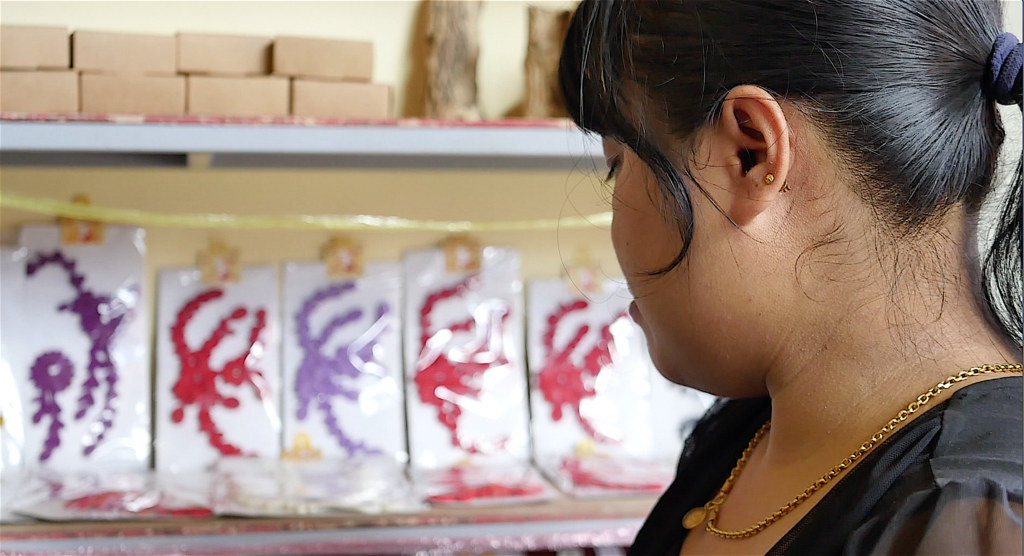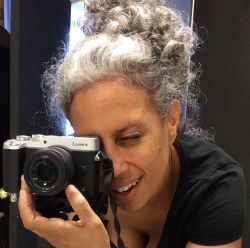I cared for my father for the last 3 years of his life. After which, I decided that by the time I was 50 I should be an established filmmaker or, at the very least, see the light at the end of the tunnel. That gave me 4 years. 4 years in which I earned a Master’s in Documentary by Practice and then… I was back to where I’d been when I was 24! The interminable hamster wheel: jobs required experience, experience required jobs. Déjà vu! My ‘mid-career shift‘ has been like beginning a career. Like youth, I’m afloat because I am childfree, I live with my mum and I have amazing friends and family who provide couches and rigorous feedback on my work. Unlike youth, I am not eligible for many training schemes.
In May, this year, I turned 50. In June, I boarded a plane to Myanmar to make a film – my first ‘real’, paid job in film! I was making a film for Enablement and The Leprosy Mission Myanmar and my brief was: “make it 100% clear that most markets in Myanmar are not accessible to people with disabilities and that with relatively little resources one can make a market a place for all!”
I take a feminist approach to filmmaking, acknowledging power imbalances and seeking to subvert them by facilitating those with less power to tell their stories. I craft films that convey women’s experiences of the world, exploring their strengths and vulnerabilities. Storytelling can give narrators the opportunity to acknowledge and even celebrate their resilience. Such films allow viewers to connect with protagonists and perhaps, reduce othering. In pursuit of gender-balanced representations on screen I chose a female protagonist, Myat Moe Htay, a button-maker with a disability.

In representing the less-heard on screen I try to be conscious not to deprive them of their power and to portray them as complex beings with human agency and limitations. In preparation for this job I watched films on disabled people. A girl with arms ending at her elbows makes a cup of tea. An armless mother and daughter prepare a meal together, eating and opening fridge doors with their feet. Films that seem to emphasise disabilities and portray disabled people almost as freaks rather than complex characters with abilities.
In my film, Myat Moe Htay teaches and shops in the market. I grappled with whether I could show her withered foot without othering her. I concluded that an image of her shriveled leg added nothing, but I also did not want to hide her disability as though it were shameful. So, I showed Myat Moe Htay negotiating the challenges of an unpaved road, her foot peeping out from under her skirt.
Five days filming with Myat Moe Htay with no common language, or even alphabet, she raised on the Asian Continent and I on a Caribbean island, demonstrated how human intelligence manifests itself in different ways in different environments. Myat Moe Htay reminded me of my amazing friends on the other side of the world. Intelligent and capable women, each with their own particular struggle and without whom I would not be where I am today. Whenever I ask my photographer friend Michelle, her opinion of a photograph that I’ve taken she responds, “It’s good, now go and take 10 more shots of the same object from interesting angles”. I saw this same quest for excellence manifest in Myat Moe Htay’s contemporary transformations of traditional Burmese button design into works of art so elaborate that they no longer have a fastening role. She told me she went from feeling like a failure to supporting her family. Myat Moe Htay reminds me that we are each a unique blend of abilities and vulnerabilities finding our way. Survival of the fittest, and I’m much fitter than I previously thought.
By Nicola Cross

Nicola Cross is a filmmaker with 10 years experience working with communities, non-profits and governments. Her work features intimate portraits of women’s experience of the world with an aesthetic that makes difficult subjects easy to watch.
You can view her work at her website and follow her on Instagram. Photo by Lesley-Anne Macfarlane
